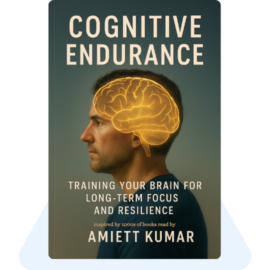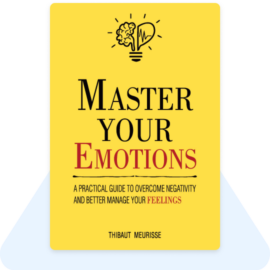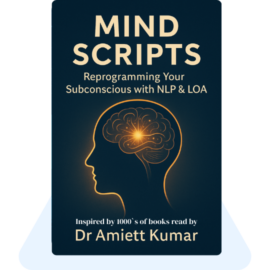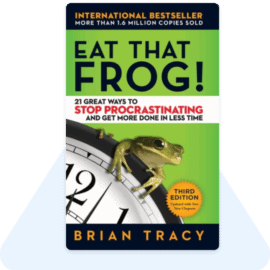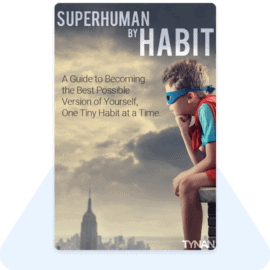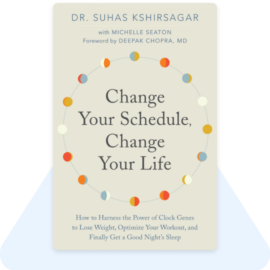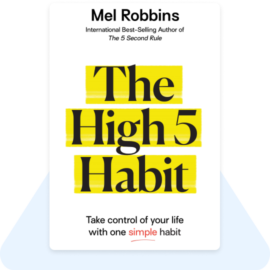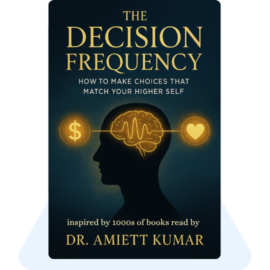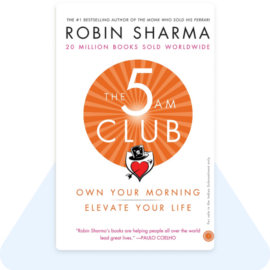Introduction — The Age of Cognitive Fatigue
We are not running out of time — we are running out of mental stamina.
The modern mind is constantly online, overstimulated, and over-informed.
We scroll between worlds, switch between tasks, and live in a state of partial attention — never fully here, never fully there.
The result? A silent epidemic called Cognitive Fatigue.
It’s not visible like physical tiredness, but it shows up as mental fog, irritability, indecision, and lack of motivation. It’s the moment you sit down to work and your brain whispers, “Not today.”
The truth is, the brain was never designed for the relentless cognitive load we put it under.
Every notification, tab, and thought-switch consumes glucose — the brain’s energy fuel. The prefrontal cortex, responsible for planning, attention, and willpower, tires faster than we realize. When it’s drained, we don’t just lose focus — we lose direction.
The opposite of distraction is not focus; it’s resilience.
Focus gets you started; resilience keeps you there.
Cognitive Endurance is the art and science of staying mentally sharp, emotionally stable, and energetically balanced over long stretches of challenge.
It’s how you build a brain that doesn’t just perform well occasionally — but sustains performance consistently.
The key is to stop treating focus like a mood and start treating it like a trainable muscle.
This book isn’t about doing more — it’s about lasting longer.
It will show you how to:
- Strengthen the neural circuits that sustain attention
- Balance your dopamine and emotional systems
- Build recovery cycles that restore clarity
- Develop patience, calmness, and long-term thinking
In an era where everyone wants quick wins, endurance is the new edge.
Because in the marathon of modern life, success doesn’t belong to the smartest — it belongs to the one who can stay focused the longest.
“Mental endurance is not built in a day; it’s built every time you refuse to look away.”
Chapter 1 — The Neuroscience of Focus
Focus feels simple — until you try to hold it.
Behind that simple act lies a complex orchestra of brain regions and chemicals constantly competing for your attention.
Understanding this orchestra is the first step to mastering it.
The Attention Engine
Focus is controlled by a system called the Reticular Activating System (RAS) — a neural network in your brainstem that filters information.
Every second, millions of sensory inputs fight for your awareness. The RAS decides what enters consciousness based on what it perceives as important.
Here’s the catch: the RAS doesn’t prioritize what’s meaningful — it prioritizes what’s repeated or emotional.
That’s why your brain instantly notices a notification sound or your name in a crowd — they’re emotionally charged, high-priority signals.
By constantly feeding it low-value novelty (scrolling, random content, constant switching), you train your RAS to prefer distraction.
In other words, focus isn’t lost — it’s retrained in the wrong direction.
The Role of the Prefrontal Cortex
The prefrontal cortex (PFC) is your command center — responsible for concentration, decision-making, and self-control.
It functions like a limited battery. Each decision, interruption, or worry drains a small amount of its glucose.
When the PFC runs low on fuel, the limbic system — your emotional brain — takes over.
That’s when you find yourself reacting impulsively, losing track of time, or chasing instant gratification.
You don’t need a stronger will — you need a smarter energy system.
The Dopamine Connection
Focus depends on dopamine, the brain’s chemical of anticipation and reward.
Too much dopamine (from overstimulation) makes your brain restless; too little makes it indifferent.
True focus happens in the dopamine balance zone — when there’s enough anticipation to keep you engaged, but not so much that you seek constant novelty.
To cultivate that zone:
- Break work into visible milestones (frequent mini-rewards).
- Avoid multitasking — it spikes dopamine inconsistently.
- Delay gratification intentionally — the anticipation builds endurance.
The Attention Cycle
The brain focuses best in cycles of 90–120 minutes, followed by short recovery.
This rhythm mirrors your body’s ultradian cycle — a natural pattern of alertness and fatigue.
Trying to focus nonstop violates biology; working in waves respects it.
Set 90-minute “Deep Focus Blocks,” then take 10–15 minutes of sensory rest — walk, breathe, hydrate, or look outside a window.
This rhythmic pattern increases attention stamina by training the PFC to recover faster.
“Focus is not a switch you flip; it’s a rhythm you align with.”
Training Attention Like a Muscle
Attention strengthens with repetition — but only if trained with precision.
Start with 10 minutes of uninterrupted focus daily. No music, no phone, no breaks.
Gradually increase the duration as your tolerance grows.
You’re conditioning your neural circuitry to stay on a single track longer — this is cognitive endurance in motion.
Key Takeaway:
Focus isn’t a gift; it’s a trained neurochemical rhythm.
By understanding how the RAS filters input, how the prefrontal cortex manages energy, and how dopamine regulates motivation, you can design your day around your brain’s biology — not against it.
That’s how mental stamina begins: not in effort, but in alignment.
Chapter 2 — Dopamine Discipline: Managing Reward Loops
Motivation isn’t magic — it’s chemistry.
And the chemical behind your every drive, distraction, and decision is dopamine.
The Dopamine Misunderstanding
Most people think dopamine equals pleasure. In truth, dopamine doesn’t make you happy — it makes you seek happiness.
It’s the molecule of anticipation, not satisfaction.
Your brain releases dopamine when it expects a reward — not necessarily when it gets one.
That means you’re wired to chase, not to enjoy.
Scrolling endlessly, checking notifications, eating “just one more bite” — these behaviors hijack dopamine’s reward circuit, giving you constant anticipation but zero fulfillment.
Over time, this overstimulation dulls your dopamine receptors, leaving you craving more stimulation for less reward.
This is the root of modern burnout: the brain chasing tiny hits of excitement while losing capacity for deep satisfaction.
The Dopamine Loop
The dopamine cycle works like this:
Trigger → Anticipation → Reward → Drop → Craving → Repeat.
The longer you stay in this loop without pause, the more your baseline dopamine drops — creating fatigue, restlessness, and lack of motivation.
You’re not lazy; you’re chemically exhausted.
To rebuild cognitive endurance, you must break the loop — not by removing dopamine, but by rebalancing it.
The Three Laws of Dopamine Discipline
- Law of Anticipation:
Learn to enjoy the wait.
The brain’s highest dopamine release occurs during anticipation, not completion.
Stretch your gratification gap — instead of immediate reward, delay it consciously.
For example, finish the full deep work block before checking your phone. - Law of Contrast:
Alternate high-dopamine tasks (like brainstorming or digital work) with low-dopamine ones (reading quietly, walking, journaling).
This resets your sensitivity and keeps motivation steady. - Law of Reset:
Every few weeks, take a “dopamine fast” — 24 hours without artificial stimulation: no phone, no social media, no streaming.
Within hours, your natural baseline resets. Your brain learns to find pleasure in stillness again.
From Stimulation to Satisfaction
Long-term focus depends on dopamine sustainability.
That means training your brain to feel reward from progress, not novelty.
When you begin to associate satisfaction with completion instead of consumption, endurance multiplies.
“Motivation is a spark; discipline is the nervous system learning to live without sparks.”
Key Takeaway:
Your brain’s motivation system runs on balance, not excitement.
When you master dopamine discipline, focus stops depending on mood — it becomes a calm, renewable source of drive.
Chapter 3 — The Cognitive Load Problem
Imagine trying to listen to five people speaking to you at once — that’s what your brain experiences daily.
Every unfinished task, every notification, every mental tab open adds to cognitive load — the total amount of information your working memory tries to juggle at once.
The Limits of Mental Bandwidth
The working memory, located in the prefrontal cortex, can only hold about 4–7 chunks of information at a time.
Beyond that, clarity collapses.
That’s why after juggling multiple tasks, you feel foggy — not because of fatigue, but because your mental RAM is full.
Cognitive overload causes three things:
- Decision Fatigue: You make slower, poorer choices after a series of decisions.
- Reduced Creativity: Overloaded circuits can’t make abstract connections.
- Emotional Volatility: When cognitive capacity drops, the amygdala overreacts, amplifying frustration or anxiety.
The Multitasking Myth
Multitasking doesn’t make you efficient; it makes you fragmented.
Switching tasks rapidly forces your brain to context switch, which consumes enormous energy.
Each switch costs about 20–25 minutes of full attention recovery time.
You’re not losing minutes — you’re losing momentum.
True productivity comes not from juggling tasks, but from sequencing focus.
Do one thing fully. Then, transition with intention.
The Mental Minimalism Formula
To reclaim focus bandwidth, apply mental minimalism — designing your environment and routines to reduce cognitive clutter.
- Externalize Information:
Write things down. Don’t store them in your head.
The brain is for creating, not remembering.
Offloading tasks reduces background noise and anxiety. - Limit Decision Windows:
Make recurring choices once and automate them.
(Example: same breakfast, fixed workout hour, pre-decided work blocks.)
Every automated decision saves glucose for what truly matters. - Declutter Digital Inputs:
- Keep one tab open per task.
- Disable non-urgent notifications.
- Check messages in scheduled batches, not continuously.
- Keep one tab open per task.
- Simplify Your Environment:
Visual clutter increases cognitive load subconsciously.
A clear desk doesn’t just look clean — it signals the brain: “Nothing else needs attention.”
The Flow of Simplicity
When your mental bandwidth is clear, focus feels effortless.
You start experiencing longer periods of cognitive flow — the brain’s optimal state for deep work.
And once you feel that flow, complexity no longer feels powerful — clarity does.
“Simplicity is not the absence of ambition; it’s the presence of precision.”
Key Takeaway:
Your brain’s capacity is finite — treat it like sacred space.
When you reduce cognitive load through structure, externalization, and minimalism, your mind stops surviving and starts performing.
Chapter 4 — Neural Recovery: The Forgotten Half of Focus
We often treat rest as the opposite of work. In truth, rest is the completion of it.
Every cycle of focus consumes neural fuel — glucose, oxygen, and neurotransmitters. Without recovery, your brain begins to operate on empty, mistaking exhaustion for apathy.
Focus is not sustained by willpower; it’s sustained by oscillation.
The Recovery Imperative
The prefrontal cortex, which handles logic and self-control, fatigues rapidly after prolonged attention.
When it does, other brain regions like the default mode network (DMN) activate — a system responsible for creativity, reflection, and subconscious processing.
That’s why solutions often appear during a shower or a quiet walk — the DMN integrates ideas your conscious mind was too tired to connect.
You don’t lose focus because you’re weak; you lose focus because you don’t alternate properly between activation and integration.
Science of Recharge
Neural recovery happens in three layers:
- Micro-recovery (seconds to minutes): Deep breathing, stretching, or gaze-shifting to reset attention circuits.
- Meso-recovery (hours): Rest breaks, movement, hydration, or mindful transitions between work blocks.
- Macro-recovery (days): Sleep, nature exposure, or digital fasting to restore dopamine balance.
Sleep: The Brain’s Maintenance System
During deep sleep, the glymphatic system flushes out neurotoxins like beta-amyloid — waste that accumulates from thinking.
Poor sleep literally clogs the brain, reducing reaction time and emotional stability.
Aim for 7–9 hours of uninterrupted rest — but more importantly, keep it consistent.
Regular sleep timing trains your circadian rhythm, giving your brain predictability — a key to mental endurance.
Active Rest
Not all rest is passive.
Activities like walking, music, journaling, or low-intensity exercise stimulate recovery while keeping the mind relaxed but alert — a state neuroscientists call “alpha coherence.”
This coherence improves problem-solving, mood, and memory retention.
“Your mind doesn’t recover by stopping — it recovers by switching intelligently.”
Key Takeaway:
Focus is a pulse, not a line.
When you treat recovery as part of performance, your clarity deepens, your emotions stabilize, and your brain finally learns to trust your rhythm.
Chapter 5 — The Emotional Regulator: Staying Calm Under Cognitive Pressure
If the brain is an engine, emotion is its temperature gauge.
Push too hard, and the system overheats; manage your emotion, and endurance stabilizes.
High performers don’t eliminate emotion — they learn to regulate it.
Because every time your mind reacts impulsively, it wastes precious cognitive fuel that could have been used for creativity or decision-making.
The Amygdala–PFC Tug-of-War
The amygdala, your brain’s alarm system, reacts faster than logic.
Under stress, it hijacks the prefrontal cortex (PFC) — the part of your brain responsible for focus and reasoning — flooding your system with cortisol.
This creates the feeling of being “mentally blocked” or “emotionally flooded.”
Training cognitive endurance means strengthening the neural bridge between the PFC and the amygdala — so emotion informs thought, but never controls it.
Emotional Regulation Toolkit
- Name It to Tame It:
Labeling emotions activates the PFC and calms the amygdala.
Simply saying, “I’m feeling pressure,” reduces its hold on your system.
Awareness redirects energy from reaction to reflection. - Physiological Sigh:
Two quick inhales and one slow exhale activate the parasympathetic system — instantly lowering stress.
This is one of the fastest biological resets available. - Cognitive Reframing:
The way you interpret stress determines its energy.
Replace “I’m anxious” with “I’m activated.”
Your brain uses the same physiological signals for fear and excitement — language decides the outcome. - Emotional Recovery Windows:
After emotionally intense work, take 2–3 minutes of full stillness.
No phone, no thinking — just exhale.
This signals safety to your nervous system, resetting focus for the next cycle.
Calm as a Competitive Edge
In cognitive science, calmness isn’t passivity — it’s low-noise clarity.
The calmer your internal state, the less energy is wasted processing stress, and the more is available for problem-solving.
This is why composure, not aggression, defines elite performers.
“The calm brain doesn’t think less; it thinks cleaner.”
Key Takeaway:
Emotional regulation is cognitive conservation.
When you train calmness, you multiply clarity — turning chaos into usable energy.
Chapter 6 — Building the Focus Cycle
You can’t rely on random bursts of motivation.
You need a system that keeps you focused even when you’re uninspired — a Focus Cycle that trains consistency, not intensity.
The Architecture of Focus
Your brain naturally follows 90–120-minute ultradian cycles — peaks of alertness followed by dips in energy.
Aligning work with these cycles prevents burnout and enhances concentration.
A single Focus Cycle looks like this:
- Preparation (5–10 min):
- Set a clear outcome (“What will I complete in this block?”)
- Remove all distractions.
- Do one grounding ritual (stretch, breathe, or close eyes).
- Set a clear outcome (“What will I complete in this block?”)
- Deep Focus (60–90 min):
- Work on a single, cognitively demanding task.
- Avoid switching contexts; each switch drains energy.
- Use a timer to prevent overextension.
- Work on a single, cognitively demanding task.
- Recovery (10–15 min):
- Walk, stretch, hydrate, or reflect — no screens.
- Allow the prefrontal cortex to reset before the next cycle.
- Walk, stretch, hydrate, or reflect — no screens.
Why Cyclic Work Beats Marathon Work
Continuous focus leads to cortisol accumulation — a stress chemical that dulls clarity.
Cyclic focus maintains high dopamine, low cortisol, and consistent motivation.
It’s not about working harder — it’s about working rhythmically.
The Cognitive Endurance Protocol
Practice 3 focus cycles per day.
That’s roughly 4–5 hours of true deep work — enough to outperform 90% of people running on distraction.
Train the cycle daily for 21 days; your neural circuits adapt to sustained attention naturally.
Focus Tracking
Keep a Focus Journal to record:
- Task started
- Duration sustained
- Distraction type
- Emotional state before and after
Within a week, you’ll see patterns of when your brain is sharpest and what breaks your rhythm — data you can refine into mastery.
The Rhythm of Consistency
Execution becomes effortless once your body associates certain hours with focus.
Just as muscles respond to training, the brain responds to ritualized attention.
Focus then stops being something you chase — it becomes who you are.
“Focus is not found; it’s built into the rhythm of your day.”
Key Takeaway:
A structured focus cycle transforms discipline into habit.
When you respect your natural peaks, protect your energy dips, and ritualize recovery, you no longer fight distraction — you outlast it.
Chapter 7 — Training the Distracted Brain
Distraction isn’t a weakness — it’s a habit your brain has practiced too well.
Years of digital stimulation have conditioned your neural pathways to expect novelty, not depth.
But the good news is: attention is plastic.
Just as you trained distraction, you can retrain focus.
The Neurology of Distraction
Each notification or scroll releases a micro-hit of dopamine.
Over time, your brain links “uncertainty” with reward — a phenomenon called variable reward conditioning.
This is why we check our phones without reason — it’s the same loop that drives slot machines.
To rebuild focus, you must break this reward loop — by teaching the brain that stillness and depth are rewarding again.
Neural Rewiring Tools
- The 30-Minute Deep Practice Rule:
Every day, do one activity that requires uninterrupted focus — reading, writing, designing, or problem-solving.
No music, no phone, no multitasking.
You’re strengthening neural circuits of sustained attention. - Digital Defocus Zones:
Create no-tech pockets during your day — mealtimes, first 30 minutes after waking, or the final hour before bed.
Your brain learns to self-regulate without external stimulation. - Intentional Boredom:
Sit in silence for five minutes doing nothing.
Initially uncomfortable, this retrains dopamine receptors to tolerate stillness — a forgotten superpower in a fast world. - Single-Task Challenge:
Choose one routine task (e.g., brushing, walking, or eating) and do it with full awareness.
This rewires sensory attention — focus through embodiment. - Reset Rituals:
Between tasks, take a slow breath, stretch, or write one reflection line.
These micro-pauses signal the end of one focus episode and the beginning of another — preventing overlap fatigue.
Training Patience
Focus isn’t the absence of distraction; it’s the management of it.
You don’t fight distraction — you build tolerance against it.
And with time, your attention span expands naturally.
“The brain remembers what you repeat — so repeat stillness until it feels like home.”
Key Takeaway:
Distraction fades not through resistance, but through retraining.
Give your brain consistent exposure to depth and stillness — and it will remember how to stay.
Conclusion — The Long Game of the Mind
Speed is overrated.
Endurance — the ability to stay focused, calm, and committed long after excitement fades — is what shapes greatness.
The modern world rewards quick thinkers but is built by long thinkers — those who can sustain effort without losing clarity or emotion.
Cognitive endurance is not about working harder; it’s about thinking longer without breaking down.
It’s about protecting your brain’s energy the way an athlete protects their body — through rhythm, rest, and resilience.
When you master this, your mind becomes a steady force — not a restless engine.
You no longer need to chase inspiration; you outlast it.
You begin to experience what few people do in a world of noise — mental peace that performs.
“The most powerful mind is not the fastest one — it’s the one that stays steady when everything else rushes.”
Final Takeaway:
Train your brain to work in harmony with its own biology.
Focus in cycles, recover with intention, manage emotion, and build rhythm.
When you stop treating clarity as a feeling and start training it as a discipline, your endurance becomes your edge — quietly, powerfully, and permanently.
Learn More from Dr Amiett Kumar;
The Evolved You: Mastering the Art of Personality Development
The North-East’s Manifestation Wisdom: Energy in the Earth, Intention in the Heart
Contents

